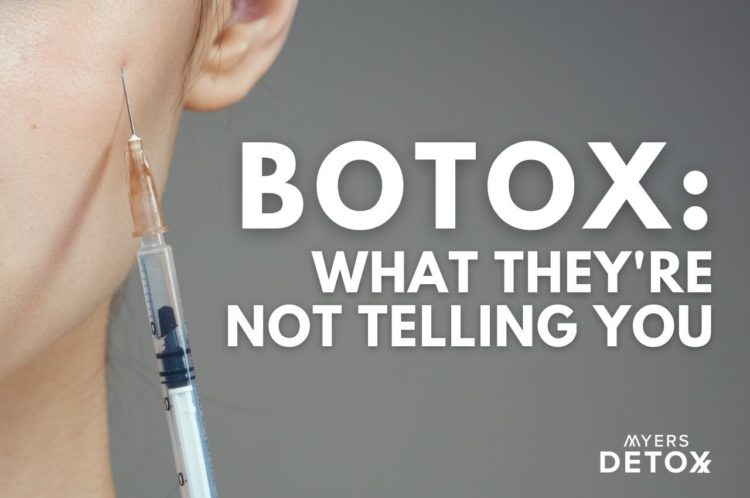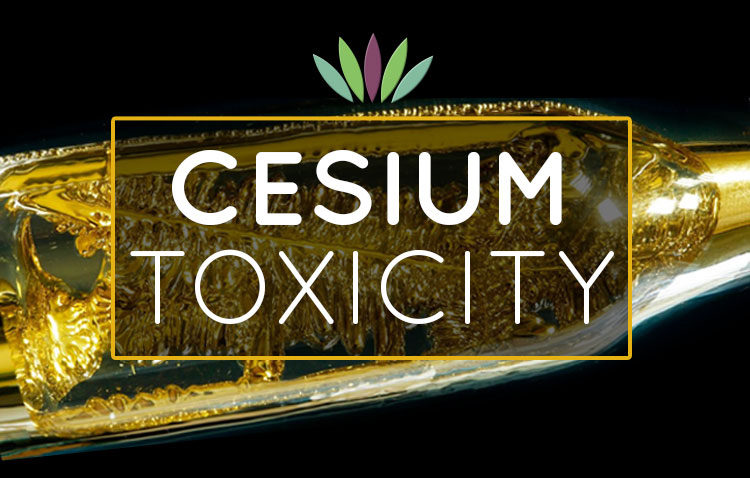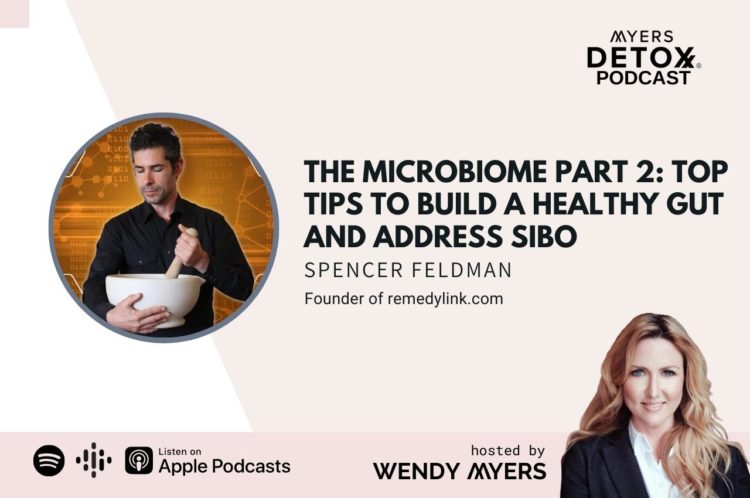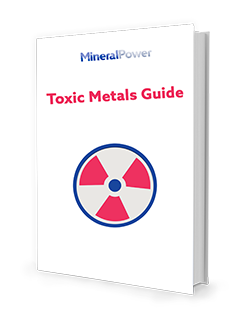Botox: What They’re Not Telling You

It seems like everyone is trying Botox these days. Women as young as 21 are seeking out their local nurse practitioner, esthetician, or dermatologist to get a little injection here or there.
While the anti-aging industry is nothing new, in the past few years, treatments that were once reserved for women aged 50 plus or the extremely wealthy are becoming much more mainstream — but are they safe?
Furthermore, could injections like Botox be contributing to your aging process instead of slowing it down?
In this article, you’ll learn:
- The scary truth behind Botox
- Why combating toxins should be your number one anti-aging priority
- Essential nutrients to help your body detox
- Key nutrients to add to your anti-aging routine
- The simple way to detox and nourish your skin cells at the same time
What Is Botox?
Botox is an injectable drug that’s made from a toxin produced by the bacteria Clostridium botulinum. This is the same toxin that causes botulism — a life-threatening type of food poisoning.
While it’s most well-known for its role as an anti-aging therapy, Botox is also used by doctors to treat a number of conditions such as[1]:
- Underarm sweating
- Blepharospasm (uncontrollable blinking)
- Chronic migraine
- Overactive bladder
- Misaligned eyes
- And more
When Botox is injected into your skin, it works by paralyzing specific muscles or blocking nerves, and its effects last anywhere from 3 to 12 months.
Some of the common side effects of Botox include[1]:
- Pain
- Swelling
- Bruising
- Headache
- Flu-like symptoms
While these symptoms tend to pass, Botox has a much darker side that many people don’t talk about. Research shows that beyond the common side effects, Botox injections may also cause some serious and long-term health effects like[2]:
- Respiratory issues
- Difficulty swallowing
- Generalized muscle weakness
- Drooping of the eyelid (ptosis)
- Pseudoaneurysm (blood leaking and collecting) of the temporal artery
- Necrotizing fasciitis (an infection that results in the death of parts of the body’s soft tissue)
- Anaphylactic shock
If that’s not enough to turn you off, there’s an even more practical issue that directly concerns Botox and anti-aging, and that’s the fact that toxins are one of the primary contributors to the aging process.
Toxins And Premature Skin Aging
The aging process can be divided into two aspects: intrinsic aging (your body’s natural aging process), and extrinsic aging (environmental factors that accelerate the aging process).
Toxins in your environment and personal care products contribute significantly to the latter, along with factors like UV rays from the sun, cigarette smoking, and poor diet.
Some of the most common sources of toxins which can negatively impact the health of your skin include air pollution, which has a direct hit on your skin’s surface, heavy metals in the environment, and chemicals in your cosmetics and anti-aging treatments which are meant to nourish your skin and actually end up contributing to the degeneration of skin cells.
While all of these factors may impact your skin in different ways, what they have in common is the production of reactive oxygen species (ROS), which trigger the activation of inflammatory responses in your skin[3].
This inflammation and oxidation can cause direct damage to the extracellular matrix (ECM) of your skin (the layer that acts as a scaffolding to hold skin tight and firm) and stimulate skin aging through intrinsic pathways.
The alteration that your cells go through after being exposed to these toxins results in deterioration and breakdown and shows up on your skin as dark spots, wrinkles, decreased elasticity, and dryness[4][5].
While Botox may help your skin appear less wrinkled and more elastic in the short-term, this potent toxin that you inject directly into your face may damage your skin cells over time.
Take The Natural Path
Does this mean that your only option is to age gracefully? Not quite.
While there’s a lot to be said for self-acceptance and the reverence that comes with aging, you don’t have to throw the towel in completely. It’s true, turning back the clock with treatments like Botox and plastic surgery may sound enticing.
However, there are ways to work with your body’s natural anti-aging mechanisms that can help to slow down your skin’s aging process and won’t further contribute to the extrinsic factors that induce oxidative stress and inflammation.
The formula for youthful skin is twofold:
- Start with nutrients that support your body’s natural cleansing process (get ahead of that oxidation and inflammation).
- Add in targeted nutrients that promote a youthful, glowing complexion.
6 Nutrients To Support Detox And Prevent Premature Aging
Your body naturally contains a robust detoxification system. Your liver, kidneys, lungs (breath), and skin all work together along with a myriad of enzymes, hormones, and chemical messengers to rid your cells and tissues of unwanted compounds.
The problem is, in our modern society, the toxic insult of the world around us is greater than it’s ever been, and in many cases, your body could use a little help to push things along.
Below are six fantastic nutrients that support your body’s natural detoxification efforts.
Silica
Silica is one of the most effective nutrients in helping your body rid itself of heavy metals. As previously mentioned, heavy metals are one of the primary toxic contributors to aging. Once ingested, these toxic compounds tend to lodge deep in your cells and tissues, making them incredibly challenging to remove.
Silica works by adsorbing heavy metals, trapping them, and pulling them out of your body. Through this powerful binding capacity, silica can assist in removing harmful metals that may interfere with your cell’s health and regeneration process[6].
Selenium
Selenium is another excellent nutrient for heavy metal detoxification as it specifically binds to some of the most detrimental and ubiquitous metals such as cadmium, inorganic mercury, methylmercury, and thallium[7].
What’s more, selenium possesses potent antioxidant activity and can neutralize some of the free-radicals caused by environmental toxins. In doing so, selenium may protect your cells from the degradation and damage of oxidative stress and contribute to the production of healthy cells[8].
Sulforaphane
Sulforaphane (SFN) is a detoxification superstar. It can protect your liver from toxic assault and simultaneously induce the activity of detoxification enzymes.
In addition, SFN is a crucial component in the synthesis of glutathione, the most powerful antioxidant system in your body[9].
Garlic
Garlic is rich in organosulfur compounds, which are known to modulate a group of detoxification enzymes called cytochrome P450. Cytochrome P450 enzymes play a crucial role in the metabolism and breakdown of toxins, especially medications and environmental pollutants.
They are also a key component of your phase one detoxification system, which is responsible for modifying toxins, so they become water-soluble and more readily excreted[10][11].
Curcumin
Curcumin, the primary bioactive compound found in turmeric, is also involved in the activity of cytochrome P450 and phase one detox[12].
Turmeric has been used for thousands of years as a healing plant in Ayurvedic medicine, touted for its ability to treat a range of conditions from respiratory disease to liver disorders to runny nose and cough.
Today, research has uncovered the potent anti-inflammatory impact of curcumin, along with its antioxidant, antimicrobial, and DNA-protecting activity[13].
Anthocyanins
Anthocyanins are a class of phytonutrients that are found in plants that contain deep purple and red colors. Most commonly berries, like blueberries and raspberries.
These bioactive compounds are well-known for their antioxidant and anti-inflammatory activity, lending them essential to fighting off the impacts of environmental toxins.
Furthermore, they help activate the phase two detoxification pathway, which is crucial for neutralizing toxins once they become water soluble[14].
4 Nutrients To Support Skin Health
Hyaluronic Acid
Hyaluronic acid (HA) is the number one nutrient that supports skin hydration.
Why care about hydration in your skin?
When your skin is properly hydrated, it appears supple, glowing, and fines lines and wrinkles disappear.
One of the common signs of aging is dry, sagging skin that’s lost its luster. When your skin is able to trap moisture, it can bring nourishment to your skin cells and perk them up, displaying a healthier, more youthful complexion.
Unfortunately, as you age and are hit with toxic insults from your environment, HA levels naturally begin to decline. That’s why supplementing with HA is one of the most crucial things you can do to keep your skin healthy from the inside out[15].
Selenium
As previously mentioned, selenium possesses potent antioxidant activity, along with an ability to detox heavy metals.
In your skin, selenium can protect against oxidation from all kinds of toxic insults. Sun damage, in particular, can be devastating to the health of your skin cells. UV radiation is one of the most common causes of extrinsic aging, often resulting in increased wrinkles, dry skin, and roughness[16].
Selenium upregulates antioxidant systems that can directly go to war against UV rays, thereby protecting your skin against its number one enemy[17].
Silica
Aside from silica’s crucial role in detoxification, it also plays a vital part in the synthesis of your skin’s extracellular matrix (ECM).
Specifically, silica is involved in the production of collagen, the primary protein and structural component of your ECM. As you age, collagen production naturally begins to decline. In fact, after the age of 21, you lose about 1% of your collagen every year.
Silica can help you combat this natural loss by activating specific enzymes called hydroxylation enzymes that are vital for the formation of the collagen network that provides strength and elasticity to your skin[18].
Biotin
Biotin is well-known for its ability to promote the health of your hair, skin, and nails, often being recommended to strengthen and assist in growth and turnover.
This B vitamin is an essential coenzyme for a number of compounds involved in the synthesis of fatty acids, which are crucial components to the outer layer (or membrane) of your cells. The health of your skin cells relies heavily on their fatty acid composition, as it is this part of the cell that allows in nutrients and helps to shuttle out toxins[19].
Detox Plus Anti-Aging In One Place
You may feel like you’ve got your hands full with all this information. Where to start? Detox? Supplements? The good news about all of this is that many nutrients that support your body’s detox pathways also contribute to anti-aging.
While eating a diet rich in fruits, vegetables, and whole foods is crucial, sometimes you need a little extra kick to get things moving in the right direction. This may feel especially true when you start to notice more wrinkles or sagging skin.
That’s why I created Ageless AF. Ageless AF is your all-in-one anti-aging supplement, which also supports your body’s natural detoxification process. It’s formulated with four nutrients that are research-backed to support skin health, with the added benefit of also promoting detoxification.
- Hyaluronic acid is the most important nutrient your skin needs to maintain it’s suppleness and hydration
- Silica promotes the synthesis and collagen while combating heavy metals
- Selenium is a powerful antioxidant that can neutralize some of the oxidation from toxins in your environment while protecting your skin against UV radiation
- Biotin supports your skin on a cellular level, assisting in your cells’ structural makeup and therefore promoting the natural flow of nutrients in and toxins out.
Takeaway
The siren call of quick and easy anti-aging treatments like Botox can be incredibly enticing. But before you go and inject a known toxin into your face, you may want to think twice about the potential repercussions.
For many, the side effects are temporary and manageable; headache, swelling, pain, and so on. For a select few, however, the backlash could be much more severe and long term.
Furthermore, even if you tolerate Botox treatments perfectly well, it’s the unseen damage that could be happening to your cells that becomes worrisome. If toxins are one of the most common causes of extrinsic aging, why would you want to introduce a toxin directly into your skin cells?
Luckily, there are plenty of natural ways to protect your skin against the toxic insults in your environment while simultaneously nourishing your cells, so they look healthier, brighter, and more youthful.
If it’s that youthful complexion you’re after, forget the Botox and go with a plan of action that will lend you long-term results. Check out Ageless AF if you’re looking for a way to hit two birds with one stone — detox and nourishment in one.
I did Botox for years, but today I am too afraid to get it after learning about the many potential side effects. Women today are dying to be beautiful. There is a better way! You simply have to nourish your skin from the inside out.
Click Here for References+
-
Yiannakopoulou, Eugenia. “Serious and long-term adverse events associated with the therapeutic and cosmetic use of botulinum toxin.” Pharmacology 95.1-2 (2015): 65-69.
-
https://www.sciencedaily.com/releases/2014/05/140528133209.htm
-
Farage, M. A., et al. “Intrinsic and extrinsic factors in skin ageing: a review.” International Journal of Cosmetic Science 30.2 (2008): 87-95.
-
Hüls, Anke, et al. “Traffic-related air pollution contributes to development of facial lentigines: further epidemiological evidence from Caucasians and Asians.” The Journal of investigative dermatology 136.5 (2016): 1053.
-
Yantasee, Wassana, et al. “Functionalized nanoporous silica for the removal of heavy metals from biological systems: adsorption and application.” ACS applied materials & interfaces 2.10 (2010): 2749-2758.
-
Whanger, P. D. “Selenium in the treatment of heavy metal poisoning and chemical carcinogenesis.” Journal of trace elements and electrolytes in health and disease 6.4 (1992): 209-221.
-
Tinggi, Ujang. “Selenium: its role as antioxidant in human health.” Environmental health and preventive medicine 13.2 (2008): 102-108.
-
Yoshida, Kazutaka, et al. “Broccoli sprout extract induces detoxification-related gene expression and attenuates acute liver injury.” World Journal of Gastroenterology: WJG 21.35 (2015): 10091.
-
Davenport, Destiny M., and Michael J. Wargovich. “Modulation of cytochrome P450 enzymes by organosulfur compounds from garlic.” Food and chemical toxicology 43.12 (2005): 1753-1762.
-
McDonnell, Anne M., and Cathyyen H. Dang. “Basic review of the cytochrome p450 system.” Journal of the advanced practitioner in oncology 4.4 (2013): 263.
-
Hodges, Romilly E., and Deanna M. Minich. “Modulation of metabolic detoxification pathways using foods and food-derived components: a scientific review with clinical application.” Journal of nutrition and metabolism 2015 (2015).
-
Shih, Ping-Hsiao, Chi-Tai Yeh, and Gow-Chin Yen. “Anthocyanins induce the activation of phase II enzymes through the antioxidant response element pathway against oxidative stress-induced apoptosis.” Journal of agricultural and food chemistry 55.23 (2007): 9427-9435.
-
Papakonstantinou, Eleni, Michael Roth, and George Karakiulakis. “Hyaluronic acid: A key molecule in skin aging.” Dermato-endocrinology 4.3 (2012): 253-258.
-
Park, Kyungho. “Role of micronutrients in skin health and function.” Biomolecules & therapeutics 23.3 (2015): 207.
-
McKenzie, R. C. “Selenium, ultraviolet radiation and the skin.” Clinical and Experimental Dermatology 25.8 (2000): 631-636.
-
Araújo, Lidiane Advincula de, Flavia Addor, and Patrícia Maria Berardo Gonçalves Maia Campos. “Use of silicon for skin and hair care: an approach of chemical forms available and efficacy.” Anais brasileiros de dermatologia 91.3 (2016): 331-335.
-
Gavin, Gertrude, and E. W. McHenry. “The effects of biotin upon fat synthesis and metabolism.” Journal of Biological Chemistry 141 (1941): 619-625.








